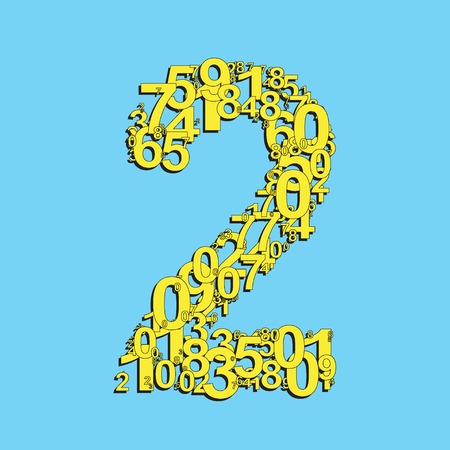1. Introduction to Palmistry Across the UK
Imagine a windswept British fair, where the salty air mingles with the scent of toffee apples and laughter rides on the breeze. Amidst the bustling stalls, three palmists—one English, one Scottish, and one Welsh—gather beneath a striped tent, each bringing their own tradition to the art of palmistry. The English palmist, with an air of scholarly curiosity, gently traces finger shapes with methodical precision. The Scottish reader, eyes twinkling like the lochs at dusk, weaves ancient folklore through her interpretations. Meanwhile, the Welsh seer invokes poetic wisdom from the misty hills as she studies each hand. Palmistry has deep roots in all corners of Britain, blending classical techniques with regional myth and intuition. In England, it found favour in Victorian parlours and remains a subject of fascination today. Scotland’s traditions intertwine with Celtic beliefs and tales handed down through generations. Wales, meanwhile, wraps palmistry in bardic storytelling and reverence for nature’s mysteries. As these three meet beneath that colourful canvas at the heart of the fair, they set the stage for a journey across borders—exploring how each nation interprets the subtle language written in our very fingertips.
2. English Perspective: The Subtle Language of Fingers
When exploring the world of palmistry through an English lens, one steps into a tradition steeped in subtlety and quiet observation. English palmists, with their characteristic reserve, often employ understated metaphors—echoes of misty moors and tranquil gardens—to interpret the shapes of fingers. Unlike the more dramatic or mystical approaches found elsewhere, the English method leans into classic symbolism, drawing upon centuries-old folklore to gently unveil meaning.
The Reserved Nature of English Interpretation
In England, finger shape readings are less about bold proclamations and more about nuanced whispers. A long, slender index finger might be likened to a willow branch—graceful yet resilient—hinting at a person whose ambition is quietly persistent. Conversely, short, stout fingers are often compared to sturdy oak roots, suggesting reliability and groundedness without boasting.
Classic English Symbolism in Palmistry
English palmists frequently reference local folklore and natural imagery:
| Finger Shape | English Metaphor | Symbolic Meaning |
|---|---|---|
| Long & Slender | Willow Branch | Graceful ambition, adaptability |
| Short & Stout | Oak Root | Steadfastness, practicality |
| Tapered Tips | Larks Song | Sensitivity, artistic intuition |
| Square Ends | Cottage Doorway | Simplicity, honesty, openness |
| Knotty Joints | Mossy Stone Pathway | Wisdom from experience, contemplative nature |
The Influence of Folklore and Storytelling
Stories have always been at the heart of English culture, and this is no different in palmistry. Many traditional readers will recount tales of legendary figures—wise women in thatched cottages or noble knights—whose destinies were foretold by the turn of a finger or the curve of a thumb. These stories serve not just as entertainment but as gentle guides for interpreting the silent language spoken by our hands.

3. Scottish Insights: Ancestral Wisdom and Highland Symbolism
Among the craggy peaks and misty glens of Scotland, palmistry carries a character distinctly its own—a blend of Celtic legend, ancestral wisdom, and a practical mysticism shaped by the Highlands. While English interpretations may lean toward rational analysis and the Welsh toward poetic intuition, Scottish approaches to finger shape meanings are deeply interwoven with heritage, story, and symbolism.
Finger Shapes Through the Lens of Celtic Myth
The Scots see fingers not just as individual traits but as living echoes of ancient myths. The index finger, for instance, is often linked to leaders like legendary clan chiefs or warriors such as Finn MacCool. In Highland lore, a strong, straight index finger suggests a calling to uphold tradition and protect kin—a direct inheritance from those who led their clans through both storm and sunshine.
The Braiding of Fate and Practicality
Scottish palmists are keenly aware that fate is not fixed. They interpret finger shapes with an earthy pragmatism: a curved middle finger might recall tales of cunning fae folk or wise women, encouraging adaptability in life’s unpredictable weather. Yet this mystical element is always grounded in the everyday—a reminder that hands must till soil as well as dream.
The Pinkie: Whisperer of Secrets
No discussion of Scottish finger readings is complete without mention of the pinkie. Among Highlanders, a long pinkie is thought to be the mark of a born storyteller—one who carries ancestral secrets and weaves them into modern lives. This echoes old gatherings around peat fires where stories passed down shaped both identity and destiny.
Thus, the Scottish approach to palmistry honours finger shapes as more than physical markers—they are living symbols, braided from myth, memory, and the resilient spirit of the Highlands. In every reading, there’s an invitation to listen for the whispers of ancestors in the lines and shapes mapped across your hand.
4. Welsh Interpretation: Poetry and Spirit in the Hands
Welsh palmistry carries a lyrical resonance, deeply entwined with the nation’s reverence for poetry, land, and ancient wisdom. Unlike the pragmatic English or the earthy Scottish readings, Welsh interpretations of finger shapes are infused with mythic tales of druids, bards, and ancestral spirits. The hand is viewed not only as a map of fate but as a living relic—echoing the hills, rivers, and stories that shape Cymru’s soul.
The Bard’s Fingers: Creativity and Expression
In Welsh tradition, long and slender fingers are often called “bardic fingers.” These are believed to signal a poetic spirit—a person blessed with eloquence, creativity, and a gift for weaving words or music. It is said that such hands belonged to the ancient bards who preserved Cymru’s heritage through song and story. Those with pronounced ring fingers are seen as natural storytellers, their lives guided by inspiration flowing from the Mabinogion itself.
Druidic Wisdom: Connection to Nature and Intuition
Shorter, sturdy fingers are revered in Wales for their connection to the druidic past. The druids—guardians of sacred groves—are said to have possessed strong hands, grounded in earth energy. In palmistry, such hands indicate practicality mixed with intuitive knowing; a harmony between action and inner vision. This blend is considered vital for those walking between worlds—the material and the mystical.
Finger Shapes in Welsh Folklore
| Finger Shape | Welsh Symbolism | Cultural Reference |
|---|---|---|
| Bardic (Long & Slender) | Poetic ability, creative soul | Bards of Eisteddfod traditions |
| Druidic (Short & Strong) | Grounded wisdom, earth connection | Druids of Anglesey legends |
| Balanced (Even Lengths) | Harmony between worlds | Ancestral guardianship stories |
For many in Wales, reading hands is more than fortune-telling; it is an act of honouring ancestors and communing with the land itself. The shape of each finger becomes a line in a poem—a verse linking past to present, human to earth, spirit to story.
5. Contrasts and Common Ground
When we examine the English, Scottish, and Welsh approaches to finger shape meanings in palmistry side by side, fascinating contrasts emerge—yet there is an unmistakable thread of kinship woven through their interpretations.
Language and Local Colour
The English tradition often leans on precise, sometimes poetic language, with terms like “Mercurial fingers” or “Jupiter’s mount” evoking both classical allusions and Victorian sensibilities. In contrast, Scottish palmistry infuses its readings with a grounded, earthy tone, peppered with Scots dialect or references to the land—think “croft-hardened hands” or “the storyteller’s thumb.” Meanwhile, Welsh palmists may invoke lyrical metaphors from their bardic heritage, speaking of “harpist’s fingers” or “dragon lines,” imbuing each reading with a sense of myth and melody.
Interpretation and Meaning
English palmistry tends to emphasise social standing and personal ambition in its interpretation of finger shapes—long index fingers may signify leadership or noble intent. The Scottish approach, shaped by a history of clan ties and rugged landscapes, might interpret the same trait as resilience or the mark of a born mediator. Welsh readings, ever attuned to collective memory and poetry, are more likely to see elongated fingers as symbols of intuition or ancestral wisdom, connecting the individual’s destiny to community stories.
Cultural Values Beneath the Surface
Beneath these stylistic differences lie distinct cultural values: England’s emphasis on hierarchy and progress; Scotland’s celebration of perseverance and kinship; Wales’ devotion to tradition and imagination. Yet all three traditions share a reverence for the hand as a mirror of inner life—a belief that our physical selves can reveal mysteries about our character, fate, and connection to those who came before us.
The Unifying Thread
No matter the language or lens, each tradition invites seekers to look beyond mere appearance—to seek meaning in nuance, to honour their roots, and to weave new stories from ancient patterns. Whether spoken in Received Pronunciation, lilting Cymraeg, or broad Scots, the message is clear: every hand is unique, yet every reading draws from a shared well of British myth and intuition.
6. Modern Resonance: Palmistry in Contemporary Britain
Today, palmistry is experiencing a quiet renaissance among young Brits. This revival isn’t about fortune-telling at faded fairgrounds; it’s a deeper, more soulful search for meaning in an age of uncertainty. Across England, Scotland, and Wales, finger shapes are once again being read—not as curiosities, but as keys to personal insight and heritage. In vibrant London cafes, students gather around palmistry books, tracing their fingers with a sense of wonder, blending English analytical precision with a playful curiosity. Up in Edinburgh, the Scottish approach lingers: respect for tradition meets new interpretations, where the wisdom of ancestors weaves through contemporary readings and storytellers tie each finger’s meaning to local legends. Meanwhile, Welsh youth seek out the magic in their own hands, infusing interpretations with poetic intuition and Celtic symbolism. This regional richness breathes life into every modern reading—whether online or face-to-face—turning palmistry into an evolving tapestry of old wisdom and new perspectives. What unites these approaches is a shared longing: to honour roots while inviting fresh questions. For today’s generation across Britain, the lines on their palms are not just echoes of the past—they’re invitations to contemplate identity, belonging, and possibility in a world that’s always changing.


